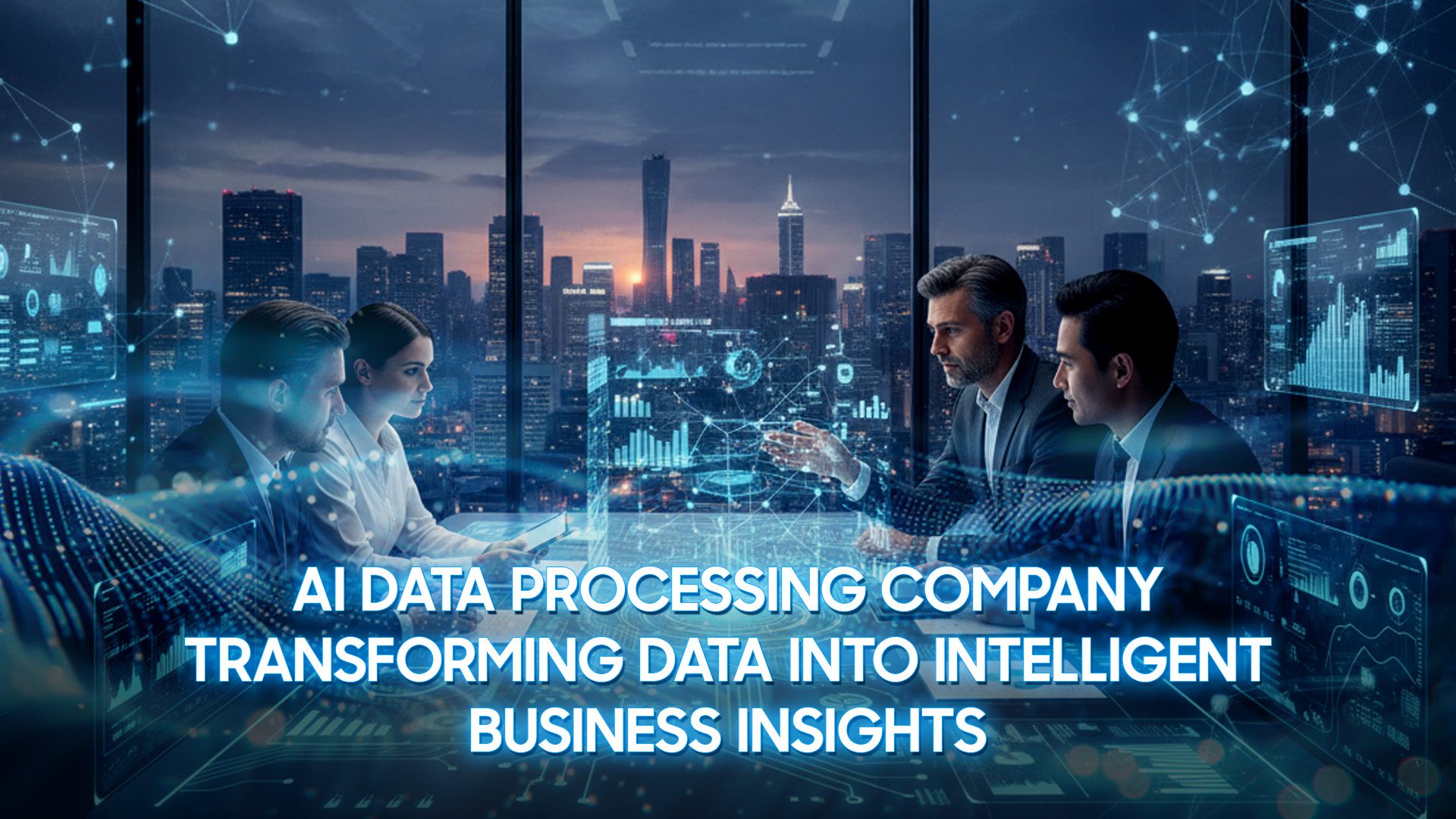As the amount of data that businesses have to process is increasing rapidly, manual information collection is not only time-consuming but also full of potential risks. In this article, DIGI-TEXX will delve into how data capture software can automate digital data collection, bring outstanding data automation benefits, and how to choose the most suitable document capture software.
What Is Data Capture and Why It Matters
In general, data capture software solutions are at the center of the global business process automation trend. The problem is that modern companies are facing a huge challenge of processing a huge amount of data from countless sources. Every day, businesses have to process thousands of documents in different formats—from supplier invoices, customer orders, registration forms, legal contracts, emails, surveys, to countless PDF documents and images.
We can all see that the problem is not the lack of data, but the inability to process and exploit it effectively. Manual data entry methods are not only slow and labor-intensive, but also pose a very high risk of error. A small mistake in entering invoice numbers or customer data can lead to serious consequences: financial loss and reduced customer satisfaction.
This is where data capture software comes into play. Data capture is an intelligent process that uses high technology to automatically identify, extract, authenticate and convert data from unstructured or semi-structured documents into structured information for use in analysis.
How Data Capture Software Works

Data capture software will act as a document processing tool with speed and accuracy far beyond that of humans. This process usually includes the following core steps:
- Data Input/Import: Raw data from various sources is fed into the system. Modern document capture software solutions can accept multi-channel inputs such as: Physical scanners for paper documents, Emails that automatically track inboxes, Network folders or FTP servers, Mobile apps that capture images of invoices, forms, or even APIs from other applications.
- Image Pre-processing and Enhancement: Input data is often imperfect. To ensure the highest extraction accuracy, the software will automatically clean up the image, with techniques such as: Deskew – Automatically rotate skewed scanned documents, Despeckle – Remove black dots or noise on the background & Contrast enhancement to clarify blurred characters.
- Intelligent Document Classification: Instead of requiring humans to sort, data capture software systems will use AI and Machine Learning to automatically recognize what a document is. This classification step can immediately distinguish between Invoices, Purchase Orders, and Contracts based on structure, layout, and keywords.
- Data Extraction: This is the core step of the process. After knowing what the document is, the software will proceed to extract important information. The core technology here is OCR, ICR, and OMR, and the highlight in recent years is AI/ML technology – This technology does not need fixed templates, AI can understand the context to find the right data to extract.
- Data Validation and Verification: Raw data after being extracted needs to be checked for validity. At this point, the system will automatically: Cross-checking – Compare the extracted data with data in the ERP system, Database Lookups – Verify whether the Customer/Partner ID exists in the system or not, Rule-based Validation – Ensure the installed functions are correct. However, when cases with low reliability appear, they will be flagged and transferred to humans for review.
- Data Export: Once the data is clean, accurate and structured, data capture software will automatically send this data to other business systems in XML, JSON, CSV format or integrate directly into the ERP, CRM system.
Key Features of Modern Data Capture Software
It must be understood that not all data capture software solutions are the same. However, there are still unique features that a standard software must have.
Intelligent document classification.

This is the ability to use AI to automatically classify documents without human intervention. Traditional document capture software systems require the creation of pre-existing templates to compare and produce results, whereas intelligent classification using artificial intelligence can learn and adapt to new document layouts, making the digital data collection process seamless even when the input data changes.
Automated data validation and error detection.
The ability to automatically detect errors and validate data at the source helps minimize errors. Good data capture software will help users configure complex business rules. For example, this feature can automatically reject duplicate invoices, warn if the total amount exceeds a certain threshold, or validate the tax code of the supplier.
Integration with ERP/CRM systems.

A good enough data capture software should be able to integrate seamlessly into popular systems such as SAP, Oracle, Microsoft Dynamics, Salesforce, and content management systems. Two-way integration allows the software to not only push data into ERP but also pull data from ERP for data validation.
>>> See more: 11+ Best Data Cleansing Tools to Optimize Your Data
Cloud-based architecture & scalability.
Cloud-based architecture is gradually replacing on-premises solutions. Cloud solutions will bring superior flexibility: businesses can access the system from anywhere, without investing in expensive hardware, most importantly, scalability. A cloud-based data capture software system can easily handle millions of documents per month without upgrading the infrastructure.
Multi-language support.

Document capture software must be able to accurately recognize and extract data from different languages, including accented languages or complex character sets. This also includes the ability to understand language formats in different regions.
Security and compliance (GDPR, ISO).
Since data capture software often handles sensitive, confidential information, good solutions will comply with strict international security standards such as ISO 27001 and data privacy regulations such as GDPR. This includes data encryption, role-based access control, and providing a detailed audit trail.
Benefits of Using Data Capture Software

Implementing data capture software is a transformation that brings countless measurable benefits. The data automation benefits include:
- Reduced Operational Costs: By automating data entry, businesses can cut up to 80% of human resource costs. Employees no longer have to spend hours retyping information, thereby focusing on higher-value tasks.
- Increased Speed and Efficiency: Tasks that previously took days can now be completed in minutes. Data capture software will always be running 24/7, helping to speed up important processes, such as processing orders faster, paying suppliers on time, and serving customers immediately when receiving requests.
- Improved Data Accuracy: No matter how careful you are, when using human resources, errors cannot be avoided, but machines cannot. Document capture software systems using advanced OCR/AI can achieve accuracy of more than 99%.
- Keep Your Information Compliant and Secure: Manual document processing always poses a security risk. A centralized digital data collection system digitizes and secures everything. Data is always encrypted and stored with tightly controlled access.
- Make Smarter Decisions: When data is collected quickly and accurately, it becomes a valuable asset. Management can see real-time reports on cash flow, supplier spending, or customer purchasing behavior. Instead of making decisions based on old data, sales teams can now react immediately to market trends, optimize spending, and uncover new business opportunities.
How to Choose the Right Data Capture Software

The data capture software market is diverse, from simple OCR tools to comprehensive intelligent automation platforms. To choose the most suitable solution, here are the factors to consider:
- Assess Actual Needs: Does the business mainly process structured forms, semi-structured documents such as invoices, or completely unstructured data such as emails, contracts? Based on that, you will choose the appropriate solutions, for example, AI/ML-based will be better for unstructured documents. Also consider the volume and input source – will the business need to process 100 documents or 1 million documents per month? Is the data to be processed mainly paper or digitized? From there, you can consider cloud or on-premise solutions.
- Integration Capability: Make sure that the data capture software you choose can integrate easily with existing systems (ERP, CRM, DMS). You need to ask the supplier clearly if they have ready-made connectors or will only provide custom APIs.
- Extraction Technology: Move away from legacy OCR software and consider vendors that use machine learning and AI for context-based extraction. This is the difference between basic document capture software and a smart solution.
- Scalability: A cloud-based platform typically offers better scalability and a lower total cost of ownership than an on-premise solution that requires hardware maintenance to ensure productivity.
- Support and Expertise: Implementing digital data collection can be complex. Choose a company that has experience in your industry, offers 24/7 technical support, and can customize the solution to fit your specific business processes.
Conclusion
In an economy where data plays a key role – manual, paper-based processes are not only a waste of resources but also a major barrier to growth. Businesses cannot make smart decisions when their data is stuck in filing cabinets or static PDF files. Investing in a data capture software solution is a strategic step to break this barrier. Are you ready to automate your data capture process and make smarter business decisions? Contact the experts at DIGI-TEXX now to get advice on a custom data capture solution for your business!
>>> Read more: What is Data Enrichment? A Complete Guide to Boosting Business Success


